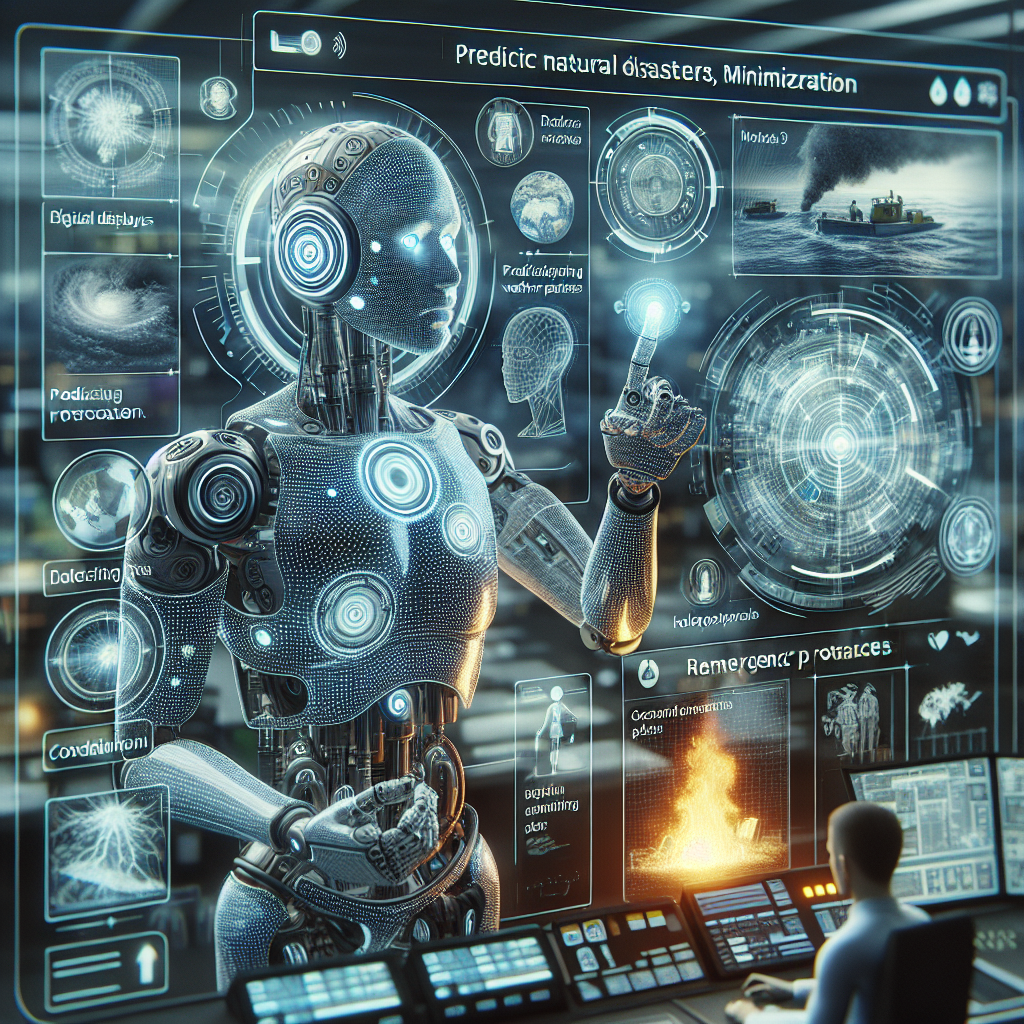The Ethics of AI in Disaster Risk Reduction and Management
In recent years, artificial intelligence (AI) has been increasingly utilized in disaster risk reduction and management efforts. AI-powered technologies have the potential to greatly enhance the effectiveness of disaster response and recovery efforts, by enabling faster and more accurate decision-making, resource allocation, and risk assessment. However, the use of AI in this context raises important ethical considerations that must be carefully considered.
One of the key ethical issues surrounding the use of AI in disaster risk reduction and management is the potential for bias in AI algorithms. AI algorithms are trained on historical data, which may reflect existing biases and inequalities. If these biases are not addressed, AI systems could perpetuate and even exacerbate these biases in disaster response efforts. For example, an AI system that is trained on data that disproportionately represents certain demographic groups may allocate resources inequitably during a disaster.
To address this issue, it is important for developers and practitioners to carefully consider the training data used to train AI algorithms, and to implement measures to mitigate bias in the algorithms. This may involve using diverse and representative data sets, regularly monitoring and auditing AI systems for bias, and implementing mechanisms for transparency and accountability in the decision-making process.
Another ethical consideration in the use of AI in disaster risk reduction and management is the potential for loss of human control. AI systems are designed to make decisions autonomously based on data and algorithms, which raises concerns about the extent to which humans can intervene in or override these decisions. In the context of disaster response, where decisions can have life-and-death consequences, it is crucial to ensure that humans retain ultimate control over AI systems and are able to intervene when necessary.
To address this issue, it is important for developers and practitioners to design AI systems with built-in mechanisms for human oversight and intervention. This may involve implementing fail-safe mechanisms that allow humans to override AI decisions, ensuring transparency in the decision-making process, and establishing clear lines of accountability for the decisions made by AI systems.
In addition to bias and loss of human control, the use of AI in disaster risk reduction and management raises ethical considerations related to privacy and data security. AI systems often rely on large amounts of data to make accurate predictions and decisions, which may include sensitive personal information. It is important to ensure that this data is collected, stored, and used in a secure and ethical manner, in compliance with relevant data protection laws and regulations.
To address this issue, developers and practitioners should implement robust data protection measures, such as encryption, anonymization, and access controls, to protect the privacy and security of the data used by AI systems. It is also important to ensure that individuals are informed about how their data is being used and to obtain their consent before collecting or processing their data.
Despite these ethical challenges, the use of AI in disaster risk reduction and management also offers significant opportunities to improve the effectiveness and efficiency of disaster response efforts. AI-powered technologies can analyze vast amounts of data quickly and accurately, identify patterns and trends that may not be immediately apparent to human analysts, and generate real-time alerts and recommendations for decision-makers.
For example, AI algorithms can analyze satellite imagery to assess the extent of damage caused by a natural disaster, predict the likelihood of future disasters based on historical data, and optimize the allocation of resources and personnel in response efforts. By harnessing the power of AI, disaster response organizations can make more informed decisions, allocate resources more efficiently, and ultimately save lives and reduce the impact of disasters on communities.
In order to realize the full potential of AI in disaster risk reduction and management, it is essential to address the ethical considerations and challenges outlined above. This will require collaboration and dialogue among developers, practitioners, policymakers, and other stakeholders to establish ethical guidelines and best practices for the use of AI in this context. By prioritizing ethics and accountability in the development and deployment of AI-powered technologies, we can harness the transformative potential of AI to enhance disaster response and recovery efforts while upholding the values of fairness, transparency, and human dignity.
FAQs:
Q: How can bias in AI algorithms be mitigated in disaster risk reduction and management efforts?
A: Bias in AI algorithms can be mitigated by using diverse and representative data sets, regularly monitoring and auditing AI systems for bias, and implementing mechanisms for transparency and accountability in the decision-making process.
Q: How can human control be maintained in AI systems used in disaster response efforts?
A: Human control can be maintained by designing AI systems with built-in mechanisms for human oversight and intervention, such as fail-safe mechanisms that allow humans to override AI decisions, ensuring transparency in the decision-making process, and establishing clear lines of accountability for the decisions made by AI systems.
Q: How can privacy and data security be ensured in AI-powered technologies used in disaster risk reduction and management?
A: Privacy and data security can be ensured by implementing robust data protection measures, such as encryption, anonymization, and access controls, to protect the privacy and security of the data used by AI systems. It is also important to inform individuals about how their data is being used and to obtain their consent before collecting or processing their data.

